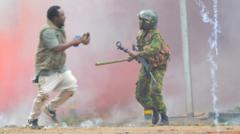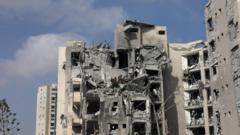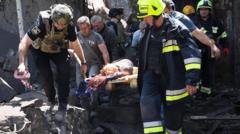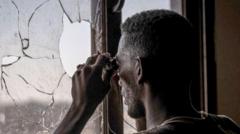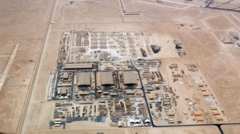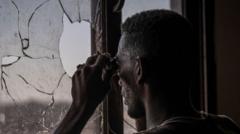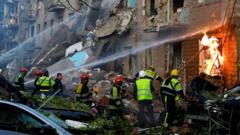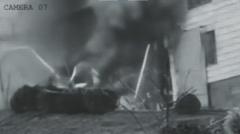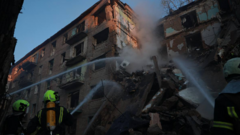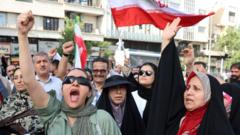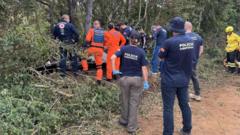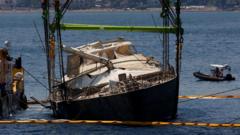An undercover BBC report reveals the dire conditions faced by survivors of the recent earthquake in Mandalay, Myanmar, where destruction is widespread and aid is scarce. Families wait anxiously for news of missing loved ones amid significant damage to buildings and infrastructure. Overwhelmed by grief and uncertainty, residents struggle to cope with a lack of basic necessities and medical care.
Devastation Unfolds in Mandalay as Earthquake Survivors Seek Help
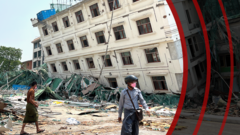
Devastation Unfolds in Mandalay as Earthquake Survivors Seek Help
Survivors in Mandalay grapple with despair and minimal assistance following a catastrophic earthquake, as rescue efforts fall short amid a political crisis.
Driving into Mandalay, the extent of destruction from last Friday's earthquake is evident, with collapsed buildings lining nearly every street in the northern and central areas. Each street reveals structures reduced to rubble, while many others exhibit dangerous cracks. As a result, patients are being treated outdoors at the primary city hospital.
Myanmar's military government is preventing foreign journalists from entering the country post-quake, forcing reporters to operate covertly. The review of the situation highlights how residents are receiving negligible aid in the aftermath of this disaster. "I have hope that he's alive, even if it's a small chance," says Nan Sin Hein, whose son, Sai Han Pha, is trapped under a collapsed hotel being renovated into office space. She waits tirelessly at the site, clinging to her hope as rescue efforts lag.
The earthquake, with a magnitude of 7.7, shifted floors and left buildings precariously tilted. Though rescue operations are underway at high-traffic locations, such as the Sky Villa complex and U Hla Thein Buddhist academy, the political strife inhibits the military from mobilizing sufficient resources. Despite their recent appeal for international assistance, only limited aid has arrived from countries such as India, China, and Russia.
As rescuers contend with oppressive heat, they work tirelessly to recover victims, but the collapse patterns complicate their efforts. Families, stricken with grief, gather outside makeshift camps, waiting for updates as the conditions grow grim. Reports indicate that many buildings, including historical landmarks like the Maha Muni Pagoda, have suffered considerable damage.
The military's reported death toll of 2,886 seems underestimated, given the extensive collapse sites that have not yet been reached. Locals are stepping in to aid recovery efforts, pulling bodies from wreckage with their bare hands rather than through official channels. Parks and open spaces are now makeshift shelters, with many displaced as aftershocks continue to rattle the city.
Desperate for help, people like 72-year-old Daw Khin Saw Myint face the reality of living outdoors after losing their homes. With limited food supplies and dwindling resources, residents endure harsh conditions while pleading for assistance.
In the emergency hospital, many patients lie on mats, as there are not enough medical staff to tend to the overwhelming number of injuries. Families are taking care of their loved ones as the likelihood of finding survivors wanes. For Nan Sin Hein, the hope of seeing her son again is fading, replaced by the grim acceptance of loss. "I want to see my son’s face, even if he is dead," she confesses, expressing the heartbreak of countless families in Mandalay.

